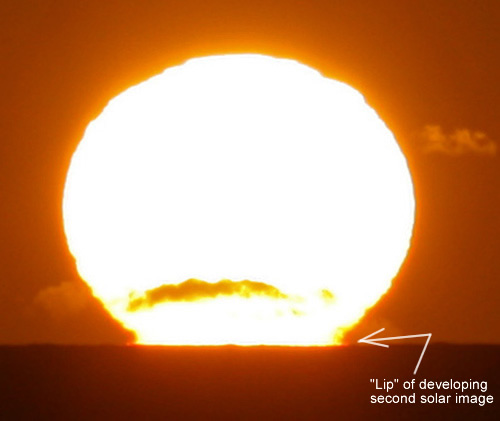These flashes, a brilliant emerald green almost touching the horizon as the last sliver of sun disappears, are the much searched and wished for classical green flash. Other types of green flash are far less obvious visually although they are photographed more often.
The flashes here are the result of an inferior mirage of the setting sun. In turn the mirage is produced by a layer of ocean warmed air beneath cooler air.
The low slanting sun's rays can reach the eye along two paths. The upper path is hardly influenced by the temperature gradients between the hot and cold air. It produces a "normal" upright" sun image.
The lower path is refracted more strongly at the hot - cold boundary zone. The ray is curved back upwards towards the colder and denser air.
The ray appears to the eye to be coming from lower down. It produces an inverted image of the sun beneath the first image. Neither image is more or less "real" than the other.
As the sun sets the two images draw closer together and at that point the refraction at grazing angles becomes very sensitive to the sun elevation and to colour. There is - in essence - vertical magnification. This magnification produces the strong colour separation - the green flash.
The classical green flash requires a mirage. As the sun gets lower look out for the signs of one - a lip on the sun's disk.
Another sign is a choppy horizon that is actually not the horizon at all but is the lower edge of the mirage.
|











